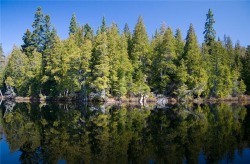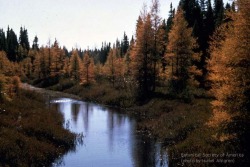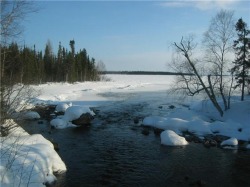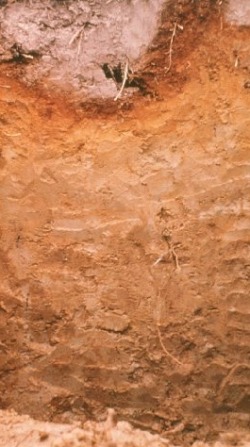Biome: Boreal Forest
Climate:
This is a continental climate with long, cold winters and short, cool summers. Extremely cold air masses from the Arctic often move in. The temperature range is larger than any other climate. Climate in the taiga is cold with average temperatures form about -5C° to +5C°.
Much of the boreal forest climate is considered humid. However, large areas in western Canada recieve very little precipitation and fall into the subhumid or semiarid climate type.
Precipitation varies from 15cm to 85cm annually. Much of the precipitation is in the form of snow. The winters are cold and long. Summers are relatively short and cool. With snowmelt and low temperatures, there is little evaporation in the summer, so the ground is usually very moist during the growing season. Availability of water and extremely long day summer allow plants to grow fast.
This is a continental climate with long, cold winters and short, cool summers. Extremely cold air masses from the Arctic often move in. The temperature range is larger than any other climate. Climate in the taiga is cold with average temperatures form about -5C° to +5C°.
Much of the boreal forest climate is considered humid. However, large areas in western Canada recieve very little precipitation and fall into the subhumid or semiarid climate type.
Precipitation varies from 15cm to 85cm annually. Much of the precipitation is in the form of snow. The winters are cold and long. Summers are relatively short and cool. With snowmelt and low temperatures, there is little evaporation in the summer, so the ground is usually very moist during the growing season. Availability of water and extremely long day summer allow plants to grow fast.
Other Abiotic Features:
Soils in this forest are called podzols, from the Russian word for ash (the colour of these soils) and their development podzolization. Podzolization occurs as a result of the acid soil solution produced under needleleaf trees. This means that iron and aluminum are leached from the A horizon, and deposited in the B horizon. Clays and other minerals migrate to lower layers, leaving the upper one sandy in texture.
Because of the low temperatures, decomposition is fairly slow, and soil microorganism activity limited. The highly lignified needles of the dominant trees decompose slowly, creating a mat over the soil. Tannins and other acids cause the upper soil layers to become very acidic, and the permanent shade from the evergreen trees keeps evaporation to a minimum, and the soils are often wet. In some cases they are waterlogged nearly all year. This tends to limit nutrient cycling, compared to more southerly forests.
Soils in this forest are called podzols, from the Russian word for ash (the colour of these soils) and their development podzolization. Podzolization occurs as a result of the acid soil solution produced under needleleaf trees. This means that iron and aluminum are leached from the A horizon, and deposited in the B horizon. Clays and other minerals migrate to lower layers, leaving the upper one sandy in texture.
Because of the low temperatures, decomposition is fairly slow, and soil microorganism activity limited. The highly lignified needles of the dominant trees decompose slowly, creating a mat over the soil. Tannins and other acids cause the upper soil layers to become very acidic, and the permanent shade from the evergreen trees keeps evaporation to a minimum, and the soils are often wet. In some cases they are waterlogged nearly all year. This tends to limit nutrient cycling, compared to more southerly forests.






